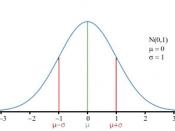Part 1 - Kaplan's Goal and Rationale in Adopting TPSDr. Gary Kaplan very much believed in the corporate culture of Virginia Mason Medical Center (VMMC) and in the case study states that it was the collaborative team approach that attracted him to VMMC. However, when he took over as CEO in 2000, the medical center was losing money for its first time in history. Kaplan had to move VMMC to become a learning organization that could be lean, and compete within a very competitive industry during a period of poor economic conditions. Transforming any organization is a formidable task and in VMMC's situation, there were two major impediments. First, VMCC had well entrenched practices of doing things the way they have always been done referred to as "routines".1 From the heuristic perspective, the routines and minor incremental changes to the routines had worked well for the VMMC through the years with the physicians retaining their sense of entitlement and autonomy without much involvement in setting organizational goals and little requirement to work for the greater good rather than themselves.
However, now there was a change in the economic and competitive environment that required a new business model that could adapt to its environment. Second, VMMC was a large facility and large organizations can be slow to change and become learning organizations. The technological environment in health care had changed rapidly and Kaplan recognized that VMMC had become inefficient. For example, improvements were needed in overall layout of the facility's treatment areas and in vital services as lab and pharmacy. Under contingency theory, technology and task interdependence factors best describes why VMMC had become stagnant - the homogeneous and stable environment of the past was gone and VMMC was not adapting to the new environment. 2 Kanter believes that larger companies...


